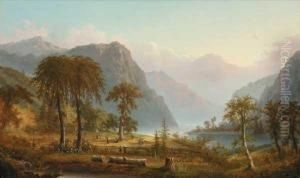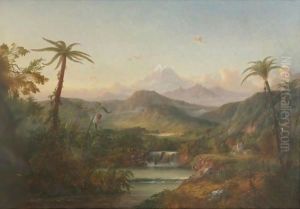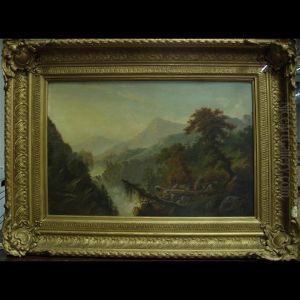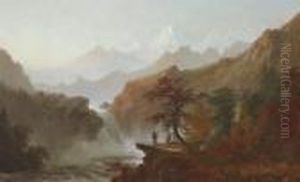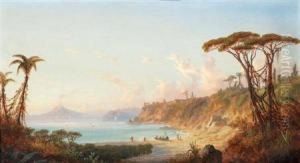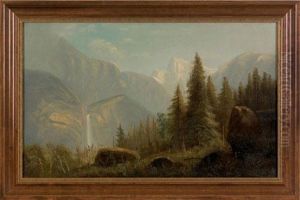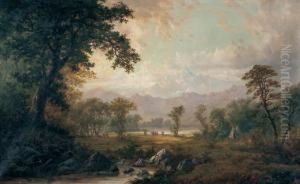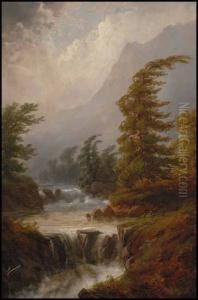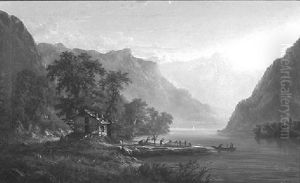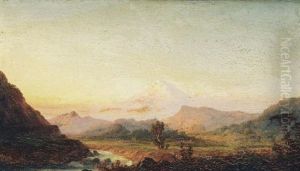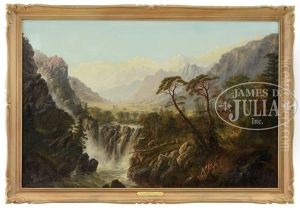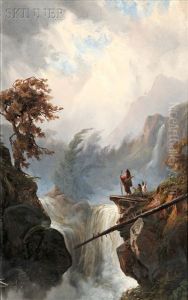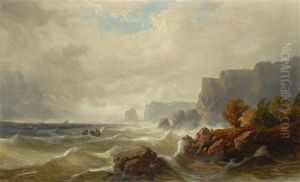Alexander Francois Loemans Paintings
Alexander Francois Loemans is a somewhat obscure artist with limited historical documentation. The exact details of his birth are not well established, and different sources provide varying information, suggesting that he was born in the early 19th century. Loemans was a landscape painter, known for his depictions of the North American wilderness, especially during the period of the Hudson River School, a mid-19th century American art movement.
Although not as widely recognized as other artists of the Hudson River School, such as Thomas Cole or Frederic Edwin Church, Loemans nonetheless contributed to the genre with his own unique perspective. His works often reflect a romantic view of nature, emphasizing its grandeur, beauty, and untamed character.
Loemans' paintings typically feature dramatic skies, rugged landscapes, and a sense of the sublime. He was skilled in capturing the changing light and atmospheric conditions of the natural world. His landscapes often included scenes of the American West, which was a subject of great interest and fascination during his time due to the westward expansion of the United States.
Despite the fact that Loemans' life details are scant, he is considered to have been active in his career from the 1850s until his death in 1898. His works have appeared in various auctions and collections, indicating a level of appreciation for his artistic contributions, although he remains a lesser-known figure in the canon of American landscape painters.
Alexander Francois Loemans passed away in 1898, leaving behind a modest but evocative body of work that continues to be studied by those interested in the broader scope of the Hudson River School and 19th-century American art.
